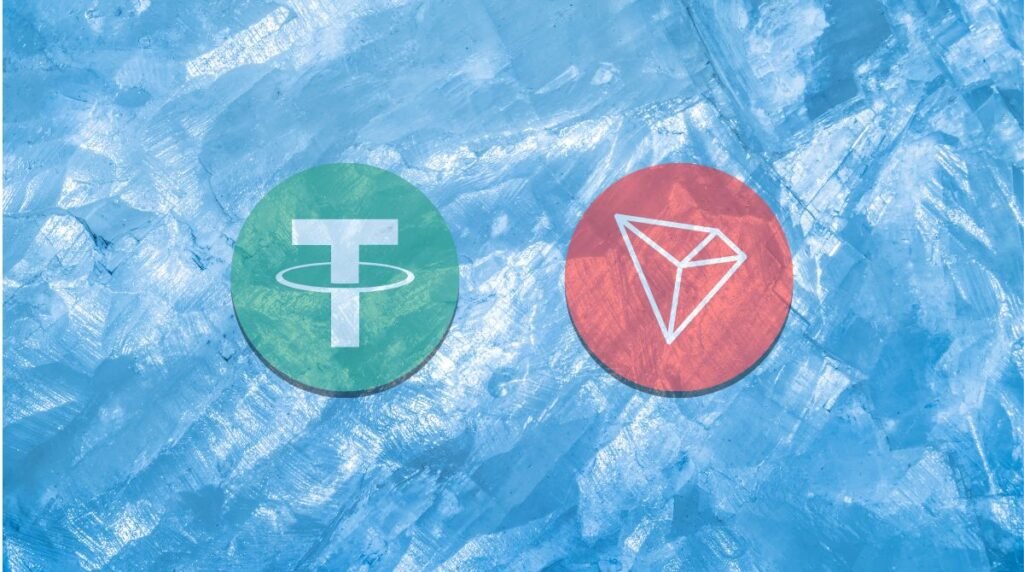On June 13, 2025, Tether used its freeze feature to lock about $12 million in USDT on the Tron blockchain. Affected tokens remain in place until Tether completes its review.
What we’ll cover
What happened
Tether identified transactions on Tron tied to suspected money laundering and scams. Rather than let those USDT move on, it activated the freeze function in its smart contract.
Anyone holding the frozen tokens sees them in their wallet but can’t trade, send or swap them. Tether posts a notice on its transparency page whenever it takes this step.
Why tokens get frozen
Tether issues USDT on several blockchains, including Tron, Ethereum and Solana. Each network’s USDT contract includes a freeze function.
When unusual patterns appear—like funds routing through known scam addresses—Tether can halt the tokens. That makes it harder for bad actors to cash out stolen or illicit funds.
How the freeze works
Tether’s smart contract on Tron tracks every USDT balance. It also includes a lock function that marks specific addresses as restricted.
Once an address is locked:
- The contract blocks any transfers from that address.
- Exchanges and wallets respect the freeze, so frozen coins never enter trading venues.
To undo a freeze, Tether must review the case, confirm the funds are clear, or act on a valid legal order.
What this means for users
Freezing coins on a public blockchain can feel at odds with the idea of uncensorable money. Some in the crypto community worry about too much central control.
On the other hand, stopping stolen or scam-linked coins helps protect ordinary holders. If stolen USDT floods the market, it can harm all users by lowering confidence in the stablecoin.
Weighing trust and security
Balancing open networks with safeguards isn’t simple. Many accept a degree of oversight if it limits crime, while others prefer no freeze option at all.
Impact on the stablecoin ecosystem
This freeze adds to a growing pattern of compliance steps by major issuers. In recent years, stablecoins have faced regulatory pressure to prevent money laundering.
Regulators take note
Agencies in the US and Europe watch these moves. They view freezes as evidence that issuers can police their own tokens, which may ease rules around stablecoin listings.
Influence on competitors
Other stablecoins without a freeze feature could seem riskier to regulators or big exchanges. That might shift trading volume toward coins that can block illicit funds.
A look at past freezes
Tether has halted USDT before:
- Late 2022: Tokens tied to a major DeFi hack were frozen, blocking an attacker from cashing out millions.
- Early 2024: USDT involved in a phishing scam was locked, preventing further fraud.
Each action comes with a public notice and details on Tether’s transparency page.
How to get or claim USDT
If you believe your funds were frozen by mistake, contact Tether support. They review each appeal individually, and may lift the restriction if they find no wrongdoing.
For fresh tokens, our free USDT faucets page lists sites that dispense small amounts of USDT at no cost. You can use these to keep trading or making transfers without waiting.
Looking ahead
Tether says it will keep monitoring transactions across all its networks. More freezes could follow if new scams arise.
Staying with established exchanges and wallets can help you avoid accidentally receiving frozen coins. Many platforms now flag suspicious balances before they hit your account.
Frequently asked questions
How often does Tether freeze coins?
There’s no set timetable. Freezes happen whenever Tether spots tokens tied to hacks, scams or other illicit behavior—typically a few times each year.
Can frozen coins ever be released?
Yes. If Tether clears the funds as legitimate or receives a court order, it can lift the freeze. The time this takes varies by case.
Will this action hurt USDT’s peg?
So far, freezes haven’t affected USDT’s dollar peg. Traders see them as a safety measure rather than a threat to stability.



